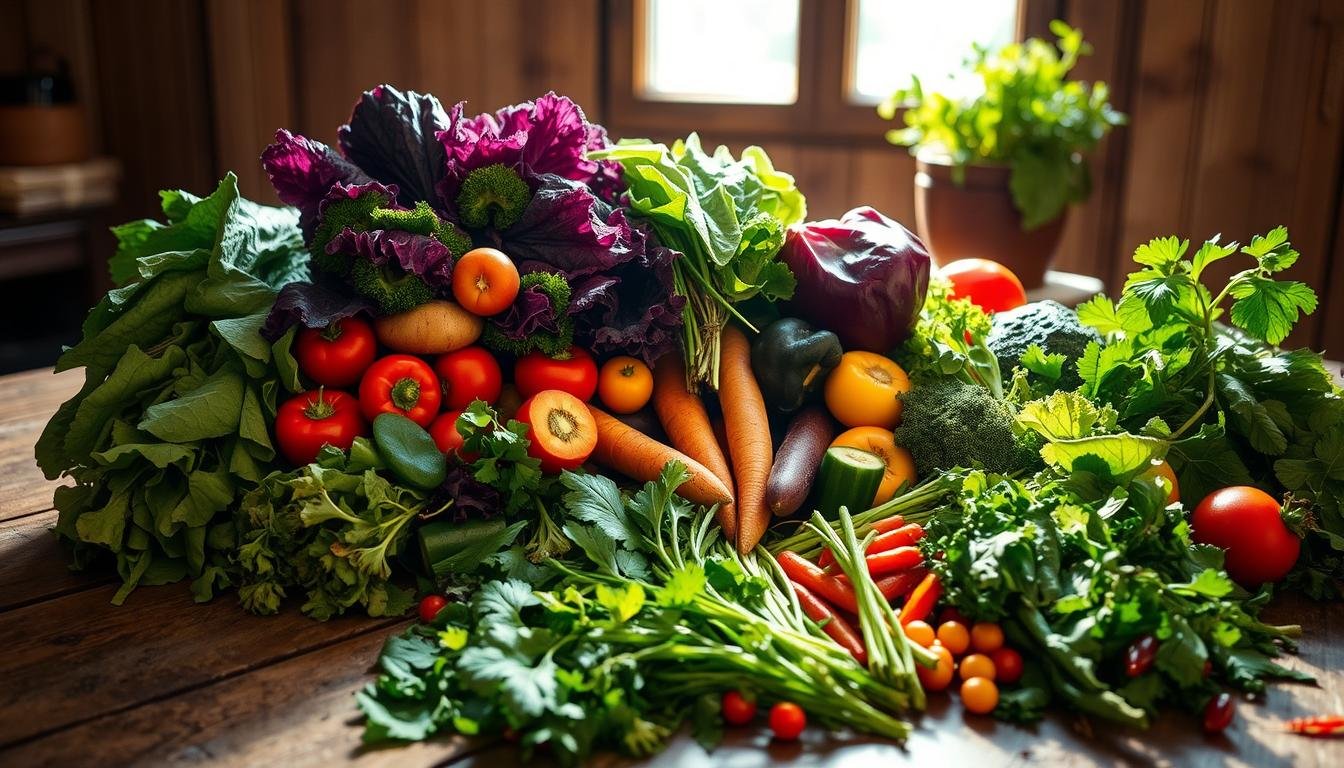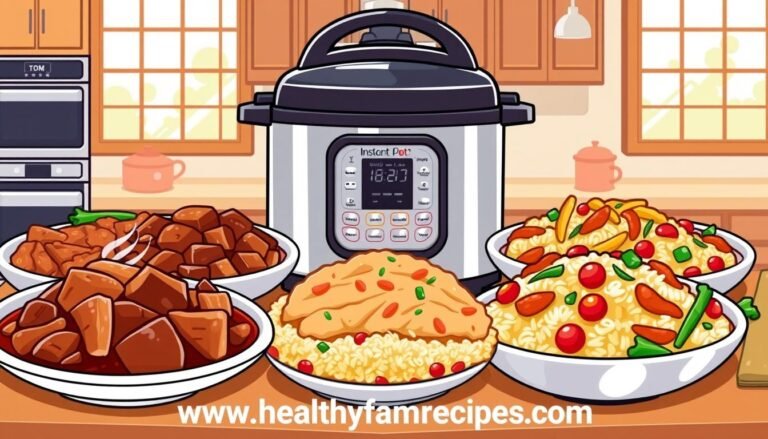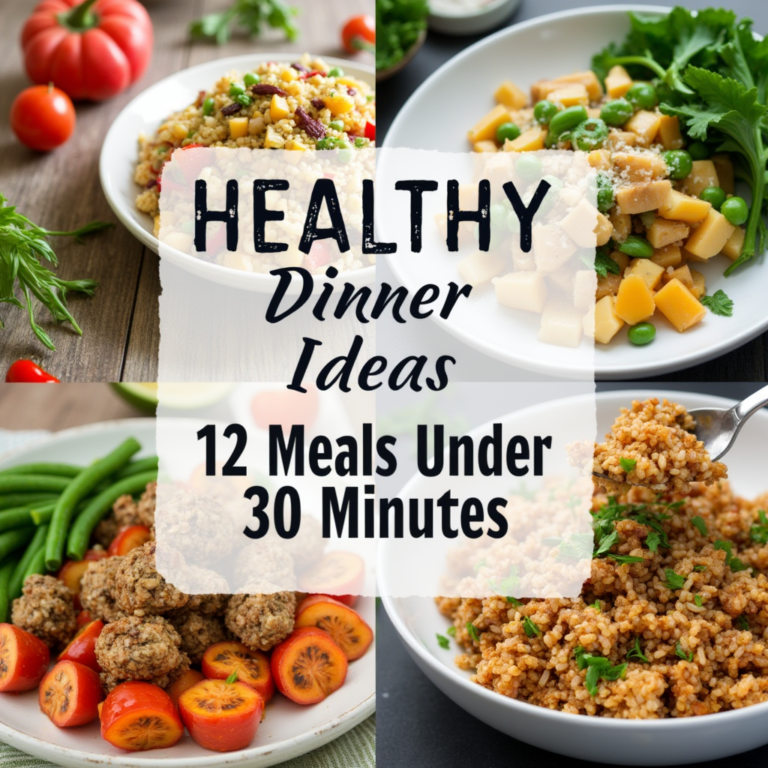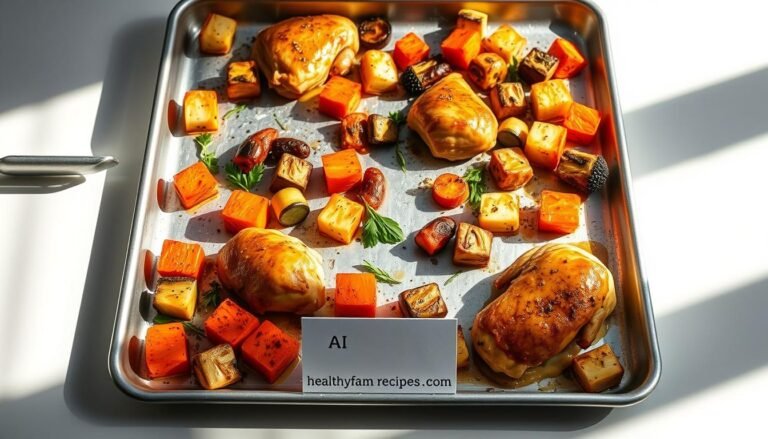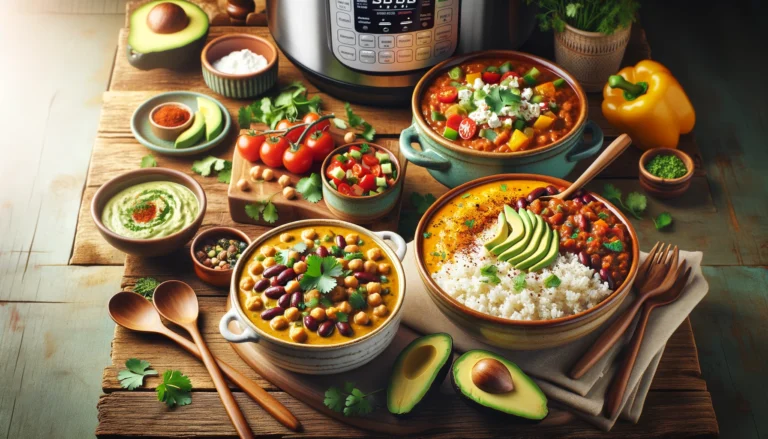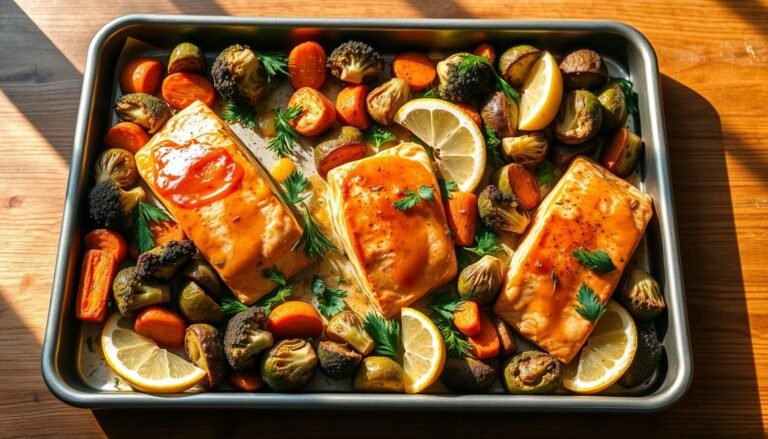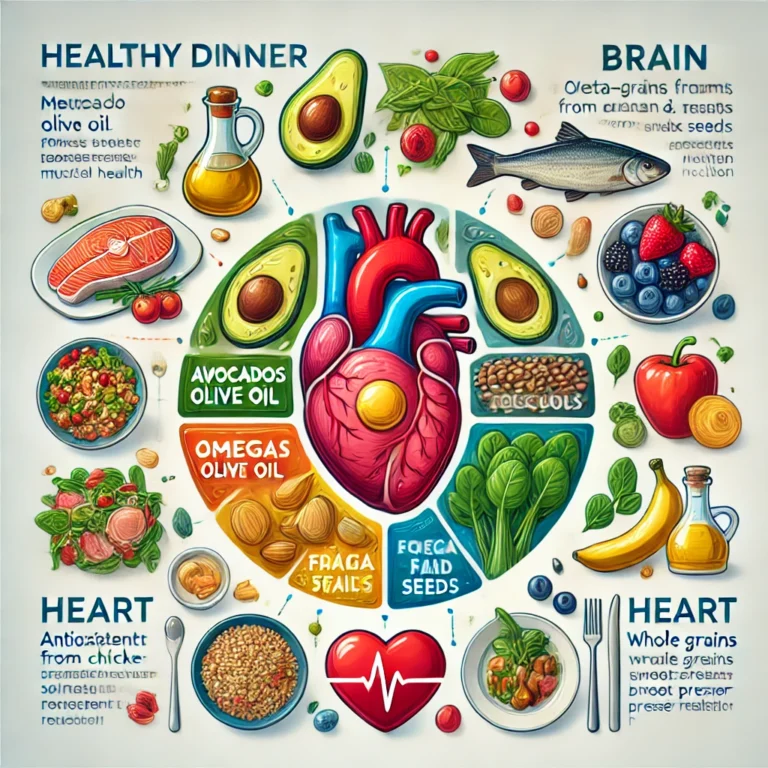Zero-Waste Dinners: How to Make 9 Incredible Meals from One Genius Recipe
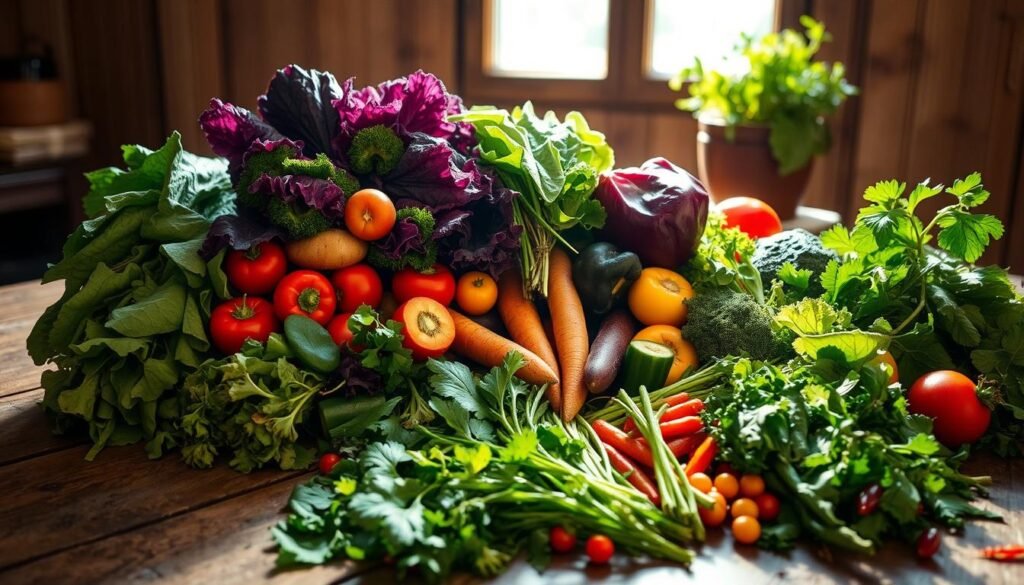
Table of Contents
Ever wondered how to make the most of your kitchen leftovers? Turning everyday food scraps into delicious meals is not only eco-friendly but also a great way to save time and money. With just a little creativity, you can whip up flavorful dishes in no time.
Focusing on sustainability doesn’t mean sacrificing taste or convenience. Zero-waste dinners can help you reduce waste while enjoying meals that are both nutritious and budget-conscious. It’s all about reusing every bit of food to minimize waste and maximize flavor.
By adopting this approach, you’ll not only cut down on kitchen waste but also contribute to a healthier planet. Let’s explore how simple it can be to create meals that are good for you and the environment.
Key Takeaways
- Transform leftovers into quick, delicious meals.
- Reduce kitchen waste with creative recipes.
- Save time and money with sustainable cooking.
- Enjoy flavorful dishes while being eco-friendly.
- Reuse food scraps to minimize waste.
Introduction to Zero-Waste Dinners
Small changes in your kitchen can lead to big environmental benefits. By rethinking how you use ingredients, you can reduce food waste and make a positive impact. This approach is not only eco-friendly but also budget-conscious.
Why Zero-Waste Dinners Matters
In the U.S., about 30-40% of the food supply is wasted each year. This amounts to nearly $1,500 per household annually. Reducing waste helps conserve resources and lowers greenhouse gas emissions.
The Environmental and Budget Benefits
Repurposing leftover ingredients like onion skins or carrot tops can significantly cut down on waste. For example, vegetable scraps can be turned into flavorful broths or added to salads. These small steps add up to big savings and sustainability benefits.
| Ingredient | Creative Use |
|---|---|
| Onion scraps | Flavorful broth base |
| Carrot tops | Pesto or salad garnish |
| Bread ends | Croutons or breadcrumbs |
By adopting these practices, you’ll not only save money but also contribute to a healthier planet. Start small, and soon you’ll see how easy it is to cook sustainably.
Getting Started with Your Kitchen Scrap Inventory
Ready to turn your kitchen scraps into culinary gold? The first step is taking inventory of what you already have. Common items like carrot peels, onion skins, and broccoli stems often end up in the trash, but they’re packed with flavor and nutrients.
Start by identifying what’s in your fridge or pantry. Look for vegetable remnants, fruit cores, and even stale bread. These can be repurposed into broths, salads, or snacks. The key is to see these scraps as ingredients, not waste.
Here’s how to organize and store them effectively:
- Keep a dedicated container in your freezer for collecting scraps. This ensures they stay fresh until you’re ready to use them.
- Label your container to avoid confusion. For example, separate vegetable scraps from fruit remnants.
- Plan ahead. Think about recipes that can incorporate these bits, like soups or stir-fries.
Proper storage is crucial. Freezing scraps preserves their quality and makes them easy to incorporate into future meals. For example, vegetable peels can be boiled to create a rich broth, while fruit cores can be used in smoothies or desserts.
By taking these small steps, you’ll not only reduce waste but also discover new ways to enhance your cooking. Start today and see how much potential your kitchen scraps truly hold!
Creative Uses for Everyday Scraps
Your kitchen scraps hold more value than you might realize. With a little creativity, you can turn them into flavorful additions to your meals. From rich broths to tangy sauces, these ideas will help you reduce waste while enhancing your cooking.
Turning Vegetable Bits into Broth
Vegetable scraps like onion skins, carrot tops, and celery ends are perfect for making homemade broth. Simply add them to a pot of water and simmer for an hour. The result is a rich, flavorful base for soups, stews, or sauces.
Here’s how to do it:
- Collect vegetable scraps in a freezer-safe container.
- Add them to a pot with enough water to cover.
- Simmer for 1-2 hours, then strain and store in jars.
This simple process not only reduces waste but also adds depth to your dishes. Plus, it’s a great way to use up those bits you’d normally toss.
Crafting Fruit Scrap Vinegar
Fruit peels and cores can be transformed into tangy vinegar. This versatile ingredient works well in dressings, marinades, or even as a condiment. All you need is a jar, water, and a bit of sugar.
Follow these steps:
- Place fruit scraps in a clean jar.
- Add a tablespoon of sugar and enough water to cover.
- Cover the jar with a cloth and let it ferment for 2-3 weeks.
Once ready, strain the liquid and store it in a bottle. This homemade vinegar adds a unique twist to your recipes while keeping your kitchen eco-friendly.
By repurposing everyday scraps, you’ll not only reduce waste but also discover new ways to elevate your cooking. Start experimenting today and see how much potential your kitchen holds!
Zero-Waste Dinners: 20-Minute Meals Using Leftover Veggie Scraps
Looking for a way to make dinner both quick and eco-friendly? Everyday vegetable trimmings like carrot tops and onion skins can be transformed into flavorful meals in just 20 minutes. These simple recipes not only reduce waste but also add a creative twist to your cooking routine.
One of the easiest ways to use scraps is by making a rich broth. Simmer carrot peels, onion skins, and celery ends in water for about an hour. This creates a versatile base for soups, stews, or sauces. It’s a great way to add depth and flavor to any dish.
Here’s a quick guide to making vegetable broth:
- Collect scraps like carrot tops, onion skins, and herb stems.
- Add them to a pot with 8 cups of water.
- Simmer for 1 hour, then strain and store in jars.
Incorporating vegetable scraps into your meals doesn’t just cut down on waste—it also enhances the flavor profile. For example, roasted carrot skins can add a crispy texture to salads or grain bowls. These small changes make a big difference in both taste and sustainability.
| Scrap | Creative Use |
|---|---|
| Carrot tops | Pesto or garnish |
| Onion skins | Broth base |
| Celery ends | Soup flavor enhancer |
These recipes are perfect for busy home cooks. They’re quick, easy, and make the most of what you already have. By rethinking how you use scraps, you’ll not only save time but also contribute to a healthier planet. Start experimenting today and see how much potential your kitchen holds!
Quick and Tasty Scrap-Based Recipes
Transform your kitchen scraps into delicious dishes with these quick and easy recipes. By balancing oil, salt, and heat, you can turn everyday leftovers into flavorful meals. These ideas are perfect for busy home cooks who want to reduce waste while enjoying tasty food.
Scrap Vegetable Stir-Fry Ideas
Stir-fries are a great way to use up vegetable scraps. Start by heating a tablespoon of oil in a pan. Add a mixture of onion skins, carrot tops, and celery ends. Cook on medium heat until tender.
Here’s a simple recipe to try:
- Heat 2 tablespoons of oil in a wok or skillet.
- Add a mixture of chopped vegetable scraps.
- Sprinkle with a pinch of salt and stir-fry for 5-7 minutes.
- Serve over rice or noodles for a complete meal.
Experiment with different spices like garlic or ginger to enhance the flavor. This method not only reduces waste but also creates a quick and satisfying dish.
Refreshing Scrap-Inspired Salads
Salads are another excellent way to use up leftover bits. Combine carrot peels, cucumber ends, and herb stems for a fresh and crunchy mixture. Toss with a light dressing made from oil, vinegar, and a pinch of salt.
Try this easy salad recipe:
- Chop vegetable scraps into bite-sized pieces.
- Whisk together 3 tablespoons of oil, 1 tablespoon of vinegar, and a pinch of salt.
- Toss the scraps with the dressing and serve immediately.
Adding nuts or seeds can give your salad extra texture and nutrition. This is a simple way to turn scraps into a refreshing meal.
By experimenting with different combinations, you’ll discover how versatile kitchen scraps can be. Start cooking today and see how easy it is to create delicious, waste-free meals!
Innovative Ideas Inspired by Celebrity Chefs and Documentaries
Ever thought about how celebrity chefs turn ordinary scraps into extraordinary dishes? Their creativity can inspire you to rethink how you use kitchen leftovers. By adopting their techniques, you can elevate your cooking while reducing waste.

One of the most impactful documentaries on this topic is Anthony Bourdain’s Wasted! It highlights the importance of using every part of an ingredient, from peels to stems. Bourdain’s approach shows that sustainability and flavor go hand in hand.
Lessons from Anthony Bourdain’s Wasted Documentary
In Wasted!, Bourdain emphasizes the value of quality ingredients like olive oil and a touch of sugar to enhance flavors. For example, apple remnants can be used to add a subtle sweetness to sauces or desserts. This simple trick transforms scraps into something special.
Here are some creative techniques inspired by the documentary:
- Use olive oil to sauté vegetable scraps for a rich, flavorful base.
- Add a pinch of sugar to balance the acidity in tomato-based sauces.
- Incorporate apple peels into smoothies or baked goods for added sweetness.
Watching documentaries like Wasted! can spark your culinary creativity. They encourage you to think outside the box and experiment with new ideas. By adopting these professional tips, you can make your cooking more exciting and sustainable.
| Ingredient | Creative Use |
|---|---|
| Olive oil | Sauté scraps for a flavorful base |
| Sugar | Balance acidity in sauces |
| Apple remnants | Add sweetness to desserts or smoothies |
These ideas not only reduce waste but also add depth and flavor to your meals. Start experimenting today and see how much potential your kitchen holds!
Eco-Friendly Cooking Tips and Techniques
Making eco-friendly cooking a habit starts with smart storage solutions. By organizing your kitchen scraps effectively, you can reduce waste and streamline meal prep. Small changes in how you store and use ingredients can lead to big environmental benefits.
Smart Storage of Leftover Scraps
Proper storage is essential for keeping scraps fresh and ready to use. Start by measuring portions with a cup or the top of an ingredient. This ensures you have the right amount for recipes like soup or side dishes.
Here are some practical tips for storing scraps:
- Use airtight containers or jars to leave scraps fresh for longer.
- Label containers to avoid confusion and streamline meal prep.
- Freeze scraps in a dedicated container for future use in broths or sauces.
Small changes in storage can significantly reduce plastic waste. For example, using reusable jars instead of plastic bags helps conserve resources. This approach also saves energy by keeping ingredients vibrant and ready for quick, healthy meals.
| Container Type | Best Use |
|---|---|
| Glass Jars | Storing vegetable scraps for broth |
| Freezer-Safe Bags | Preserving fruit remnants for smoothies |
| Airtight Containers | Keeping bread ends fresh for croutons |
By adopting these techniques, you’ll not only reduce waste but also make cooking more efficient. Start today and see how smart storage can transform your kitchen!
Budget-Friendly Benefits of Scrap Cooking
Cooking with scraps isn’t just eco-friendly—it’s a smart way to stretch your grocery budget. By repurposing everyday leftovers like stale bread and citrus peels, you can create delicious meals while saving money. These small changes add up, helping you reduce waste and cut down on food costs.
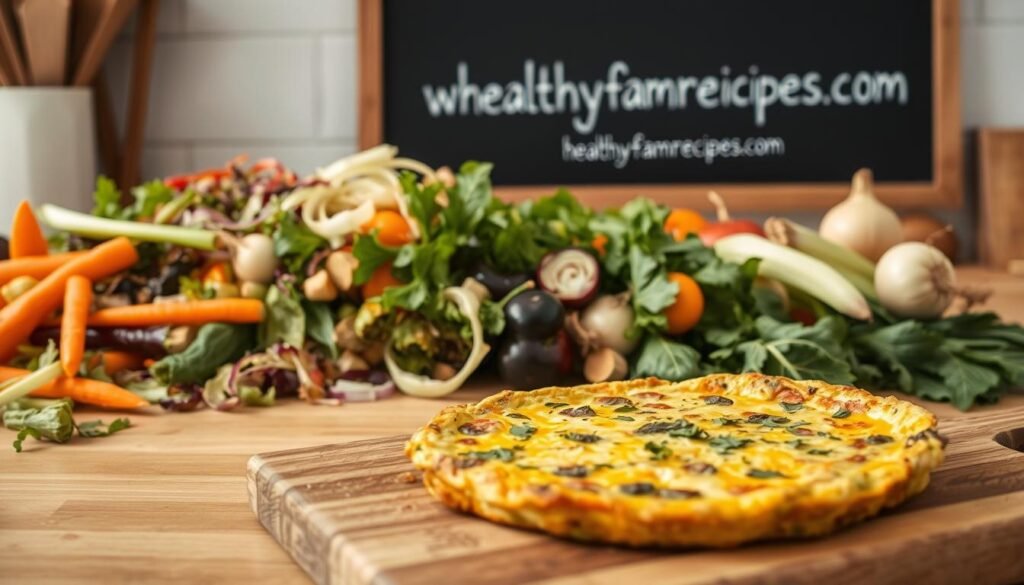
One of the easiest ways to save is by making homemade stock. Vegetable scraps like onion skins, carrot tops, and celery ends can be simmered to create a flavorful base for soups and sauces. This simple process not only reduces waste but also eliminates the need for store-bought broth.
Here’s how to make your own stock:
- Collect vegetable scraps in a freezer-safe container.
- Add them to a pot with 8 cups of water.
- Simmer for 1-2 hours, then strain and store in jars.
Another budget-friendly idea is transforming citrus peels into tangy dressings or snacks. Lemon and lime rinds are rich in vitamin C and antioxidants, making them a nutritious addition to your meals. For example, candied citrus peels can be a sweet treat, while infused vinegars add a zesty flavor to salads.
Here’s a quick guide to using citrus scraps:
| Scrap | Creative Use |
|---|---|
| Lemon peels | Infused vinegar or zest for baking |
| Orange rinds | Candied snacks or marmalade |
| Lime skins | Tangy salad dressing |
By incorporating these ideas into your routine, you’ll not only save money but also enjoy the creative process of cooking. Every saved scrap contributes to a lower food bill and a more sustainable kitchen. Start experimenting today and see how much potential your leftovers hold!
Sustainable Kitchen Practices for the U.S. Home Cook
Transforming your kitchen into a sustainable space starts with smart organization. By organizing your fridge and freezer effectively, you can extend the shelf life of ingredients and reduce waste. Small changes in how you store and use food can make a big difference.
Organizing Your Fridge and Freezer
Proper organization is key to reducing waste. Start by separating stems and rinds from other ingredients. This ensures they’re used efficiently and don’t end up in the trash. For example, citrus rinds can be used for cleaning or flavoring dishes.
Here are some practical tips for organizing your fridge:
- Use clear containers to store leftovers. This helps you see what’s inside and prevents forgotten bits.
- Label shelves or sections for specific items like vegetables, fruits, and dairy. This makes it easier to find what you need.
- Keep a dedicated container in your freezer for collecting scraps. This ensures they stay fresh until you’re ready to use them.
Tracking every bit of food is essential. It helps you plan meals and avoid waste. For example, broccoli stems can be chopped and added to stir-fries, while carrot tops can be turned into pesto.
Here’s a quick guide to repurposing common scraps:
| Ingredient | Creative Use |
|---|---|
| Citrus rinds | Natural cleaner or zest for baking |
| Broccoli stems | Stir-fries or soups |
| Carrot tops | Pesto or garnish |
By adopting these practices, you’ll not only reduce waste but also make cooking more efficient. Start today and see how much potential your kitchen holds!
Adapting International Waste-Free Cooking Trends
Discover how global cuisines turn every ingredient into a masterpiece. From Asia to Europe, cultures worldwide have perfected the art of using every part of their food. These traditions not only reduce waste but also inspire innovative flavor combinations.
In many cultures, nothing goes to waste. For example, in Indian cuisine, bean skins are often fried into crispy snacks. In Japanese cooking, fish bones are simmered to create rich broths. These methods show how every part of an ingredient can be transformed into something delicious.
Here are some tips to adapt these trends in your kitchen:
- Puree leftover beans into dips or spreads for a quick snack.
- Turn vegetable scraps into homemade broth cubes for soups and stews.
- Experiment with international techniques like fermenting or pickling to preserve food.
By exploring these methods, you’ll not only reduce waste but also discover new ways to enhance your cooking. For instance, turning carrot tops into pesto or using citrus rinds for cleaning are simple yet effective practices.
Here’s a quick guide to repurposing common ingredients:
| Ingredient | Creative Use |
|---|---|
| Bean skins | Crispy snacks or thickening agent |
| Vegetable scraps | Broth cubes or stir-fry additions |
| Citrus rinds | Natural cleaner or zest for baking |
These international trends not only reduce waste but also inspire creativity in the kitchen. Start experimenting today and see how much potential your ingredients hold!
Conclusion
Cooking sustainably starts with seeing the potential in every ingredient. By repurposing what you already have, you can create flavorful meals while reducing waste. This approach not only saves money but also adds unique twists to your recipes.
Throughout this article, we’ve explored creative ways to turn everyday bits into delicious dishes. From homemade broths to tangy dressings, each method highlights the value of using every part of your food. These small changes make a big impact on both your kitchen and the planet.
Take the first step today. Experiment with one or two scrap-based recipes and discover how easy it is to cook sustainably. Every ingredient holds potential—unlock it and enjoy the benefits of a waste-free kitchen.
FAQ
What are some quick ways to use vegetable scraps in meals?
You can turn carrot tops, onion skins, and celery ends into a flavorful broth. Or, toss peelings and stems into a stir-fry for added texture and nutrients.
How can I make fruit scrap vinegar at home?
Combine apple cores, citrus rinds, and a bit of sugar in a jar. Cover with water and let it ferment for a few weeks. Strain and enjoy a tangy, homemade vinegar.
What’s the best way to store leftover scraps for later use?
Keep a container in your fridge or freezer for scraps like vegetable peels, herb stems, and onion ends. They’re perfect for making stock or soup later.
Can I use citrus rinds in cooking?
Absolutely! Citrus rinds add a zesty flavor to dishes. Grate them into salads, sauces, or even baked goods for a fresh twist.
How do I make a simple scrap-based salad?
Chop up leftover vegetables, toss with olive oil, vinegar, and a pinch of salt. Add beans or bread cubes for a hearty, waste-free dish.
What’s a creative way to use bread scraps?
Turn stale bread into croutons or blend it into a thickener for soups. You can also make breadcrumbs for coating proteins or topping casseroles.
How can I reduce food waste while cooking?
Plan meals around what you already have, store ingredients properly, and get creative with scraps. Small changes like these can make a big difference.
Are there any eco-friendly tips for organizing my kitchen?
Use clear containers to store leftovers and label them with dates. Keep your fridge organized to avoid forgotten items that go to waste.
Can I use vegetable skins in recipes?
Yes! Potato skins, carrot peels, and other vegetable skins are packed with nutrients. Roast them for a crispy snack or blend them into soups.
What’s a fast way to make a scrap-based broth?
Simmer vegetable scraps, herb stems, and a pinch of salt in water for about 20 minutes. Strain and use it as a base for soups or sauces.
Source Links
- Zero-waste recipes for every day – https://www.bbcgoodfood.com/howto/guide/zero-waste-recipes-for-every-day
- 8 Recipes That Make Delicious Use of Produce Scraps, From Kale Ribs to Carrot Tops – https://www.forksoverknives.com/recipes/vegan-menus-collections/low-waste-recipes-using-produce-scraps/
- Zero Waste Vegan Recipes To Save Money & Food – https://eluxemagazine.com/recipes/zero-waste-vegan-recipes/
- Upcycled Vegan Herb Pesto: Zero-Waste Plant-Based Cooking – https://drsirichand.com/upcycled-vegan-herb-pesto-zero-waste-plant-based-cooking/
- 15 Zero-Waste Recipes You Need for a Sustainable Kitchen – https://www.aol.com/15-zero-waste-recipes-sustainable-185700508.html
- Carleigh Bodrug of PlantYou Shares How to Transform Chickpea Water into Chocolate Mousse – https://www.forksoverknives.com/how-tos/how-tos-transform-chickpea-water-into-aquafaba-chocolate-mousse/
- Homemade Vegetable Broth with Scraps – https://toshistable.com/homemade-vegetable-scrap-broth/
- Scrap Happy Planet: Eat those vegetable and fruit scraps! – https://vintagekitchen.org/2025/02/01/scrap-happy-planet-raid-your-vegetable-and-fruit-scrap-bowls/
- Don’t Throw That Away! 18 Surprising Recipes That Turn Food Scraps Into Gourmet Delights! – https://www.thequeenzone.com/dont-throw-that-away-18-surprising-recipes-that-turn-food-scraps-into-gourmet-delights/
- How to Revive Sad Vegetables Through Braising – Zero-Waste Chef – https://zerowastechef.com/2024/08/27/braising-sad-vegetables/
- The Tastiest Way to Stop Wasting Food in Your Kitchen – https://sagealphagal.com/homemade-vegetable-broth/
- Creative Ways to Use Vegetable Scraps in Cooking – Fresh Farms – https://www.freshfarms.com/creative-ways-to-use-vegetable-scraps-in-cooking/
- How to Make Concentrated Vegetable Base for Broth – Zero-Waste Chef – https://zerowastechef.com/2024/09/11/how-to-make-your-own-vegetable-base-for-broth/
- #242: Plant-Based and Less Waste – Carleigh Bodrug’s Adventures in Scrappy Cooking — PLANTSTRONG Podcast – https://www.plantstrongpodcast.com/blog/scrappy-cooking-carleigh-bodrug
- 6 Genius Ways to Upcycle Your Food Scraps – https://www.tasteofhome.com/collection/ways-to-upcycle-your-food-scraps/?srsltid=AfmBOoqYOiIHKhmMzPM901vfKx3MakeHUh9OJ0X8YhfR1etgSpQbvWC7
- Feel-good food at feel-food prices for when you’re skint – https://www.independent.co.uk/life-style/food-and-drink/recipes/cheap-dinner-recipe-ideas-skint-cook-b2503155.html
- Time to Eat: Delicious Meals for Busy Lives: A Cookbook – https://www.goodreads.com/book/show/54500042-time-to-eat
- What To Do With Leftover Pulp From Juicing For Zero Waste Cooking – Sustain Life Journal – https://sustainlifejournal.com/what-to-do-with-leftover-pulp-from-juicing/
- Tips for Sustainable Cooking- Techniques and Benefits – https://cookingenie.com/content/blog/tips-for-sustainable-cooking-techniques-and-benefits/
- How to Reduce Food Waste + Best Zero-Waste Recipes – https://www.meghantelpner.com/how-to-reduce-food-waste-best-zero-waste-recipes/
- The Budget-Friendly Ways I Repurpose My Produce Scraps – https://www.southernliving.com/how-to-repurpose-produce-scraps-8670958?srsltid=AfmBOor5i4bd9WfXLRKY8mooOGuZAa0qJzJmVMY7ztMRKqilKDr3zG1u
- 16 Recipes That Give New Life to Your Fruit and Veggie Scraps – EcoWatch – https://www.ecowatch.com/zero-waste-recipes-2653602289.html
- Tips for Kitchen Scraps Reuse and Home Sustainability – https://www.imperfecthomemaking.com/kitchen-scraps-tips
- 31 Sustainable Recipes That Reduce Food Waste – https://balancedkitchen.com/2024/07/sustainable-recipes/
- 9 Food Waste Solutions To Prevent Food Waste At Home – https://www.sustainablejungle.com/food-waste-solutions/
- 15 Emerging Technologies Helping Reduce Food Waste – https://www.lightspeedhq.com/blog/food-waste-emerging-technologies/
- Less Waste, More Taste: Attitudes Towards Food Waste Reduction Strategies|Mintel – https://www.mintel.com/insights/food-and-drink/less-waste-more-taste-attitudes-towards-food-waste-reduction-strategies/
- From trash to table: will upcycled food save the planet? – https://www.theguardian.com/environment/2024/feb/22/us-food-waste-upcycling-snacks
- From Trash to Treasure: How Culinary Upcycling is Revolutionizing Sust – https://www.capecrystalbrands.com/blogs/cape-crystal-brands/from-trash-to-treasure-how-culinary-upcycling-is-revolutionizing-sustainable-cooking?srsltid=AfmBOoqxnyb7LytWDHaquYujOcpQpy5iiRujHhzYnxzYKzDVWY83FjTY
- The Ultimate Guide to Garbage Bread Recipe : A Flavorful and Sustainable Dish – https://wanarecipes.com/garbage-bread-recipe/
